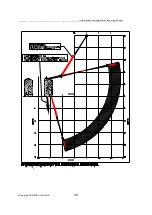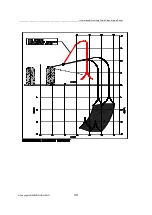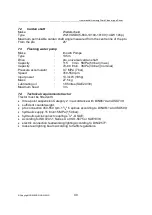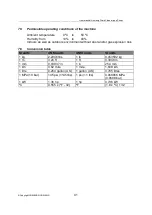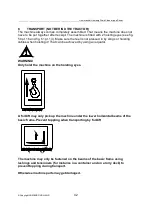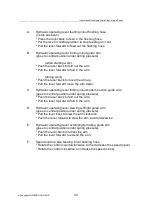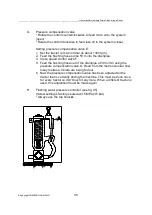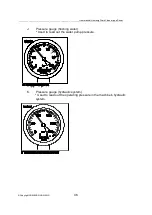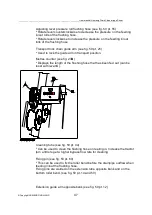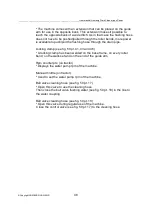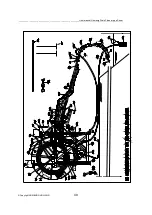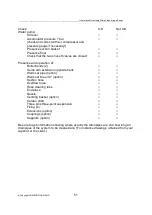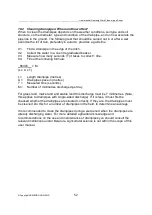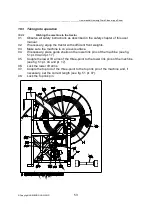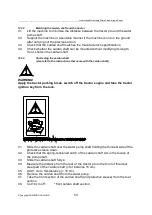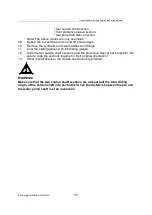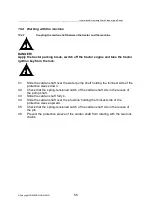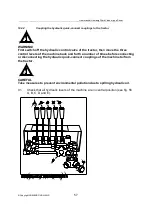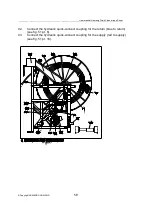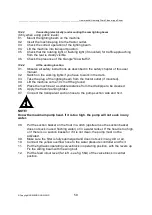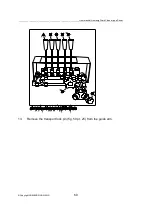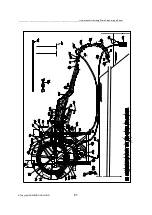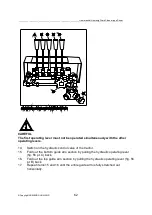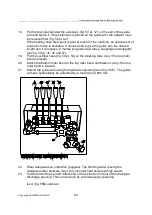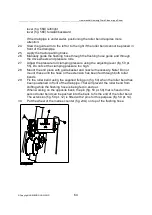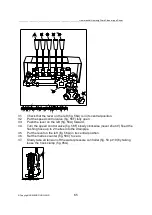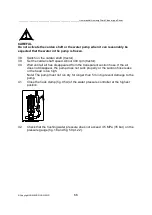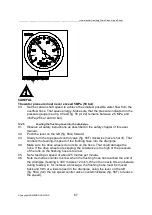
_______________________________________________________User manual Homburg Drain Cleaner type Senior
© Copyright HOMBURG HOLLAND
52
10.2 Cleaning drainpipes: When and how often?
When to clean the drainpipes depends on the weather conditions, soil type and soil
structure, on the diameter, type and condition of the drainpipe, and on how accurate the
pipe lies in the ground. The following test that should be carried out in or after a wet
period with a lot of rain, preferably in autumn, provides a guideline.
01.
Find a drainpipe in the edge of the ditch.
02.
Collect the water in a one litre graduated beaker.
03.
Measure how many seconds (T) it takes to collect 1 litre.
04.
Fill out the following formula:
_86400__ = M
(L x A x T)
L =
Length drainpipe (metres)
A =
Drainpipe space in (metres)
T =
Measured time (seconds)
M =
Number of millimetres discharged per day
For grass land, maize land and arable land this discharge must be 7 millimetres. (Note,
this applies to drainpipes with single-sided discharge). If it is less, it must first be
checked whether the drainpipes are situated correctly. If they are, the drainpipes must
be cleaned. Do this for a number of drainpipes in the field, to determine an average.
It is recommended to clean the drainpipes during a wet period when the drainpipes are
already discharging water. For more detailed agricultural knowledge and
recommendations on the use and maintenance of drainpipes you should consult the
relevant institutions and/or literature. Agricultural science is not within the scope of this
user manual.
Содержание SE-M135
Страница 2: ......
Страница 97: ......
Страница 99: ......
Страница 100: ......
Страница 101: ......
Страница 102: ......
Страница 103: ......
Страница 104: ......
Страница 105: ......
Страница 106: ......
Страница 107: ......
Страница 108: ......
Страница 112: ......
Страница 113: ......
Страница 114: ......
Страница 115: ......
Страница 116: ......
Страница 117: ......
Страница 118: ......
Страница 119: ......
Страница 120: ......

